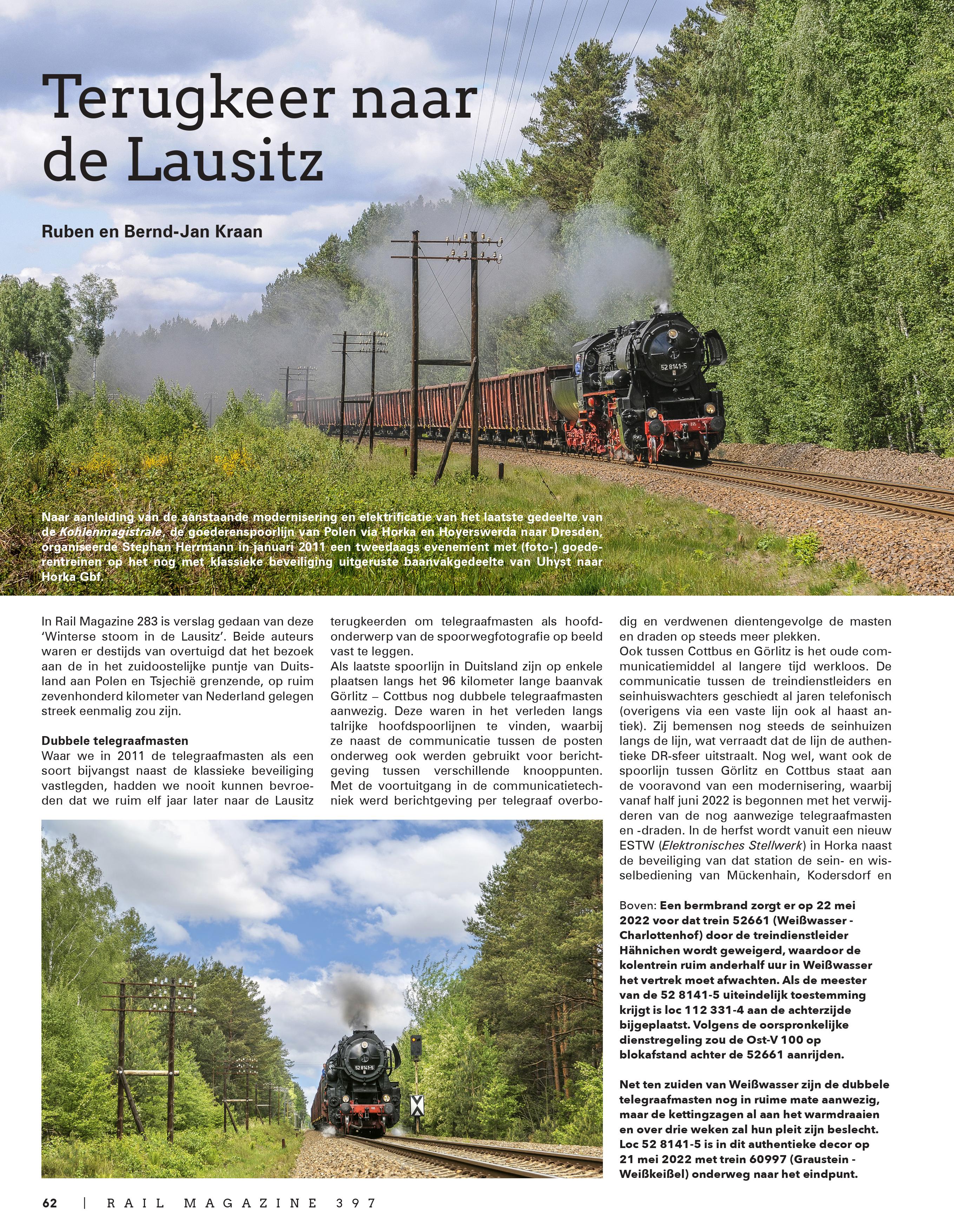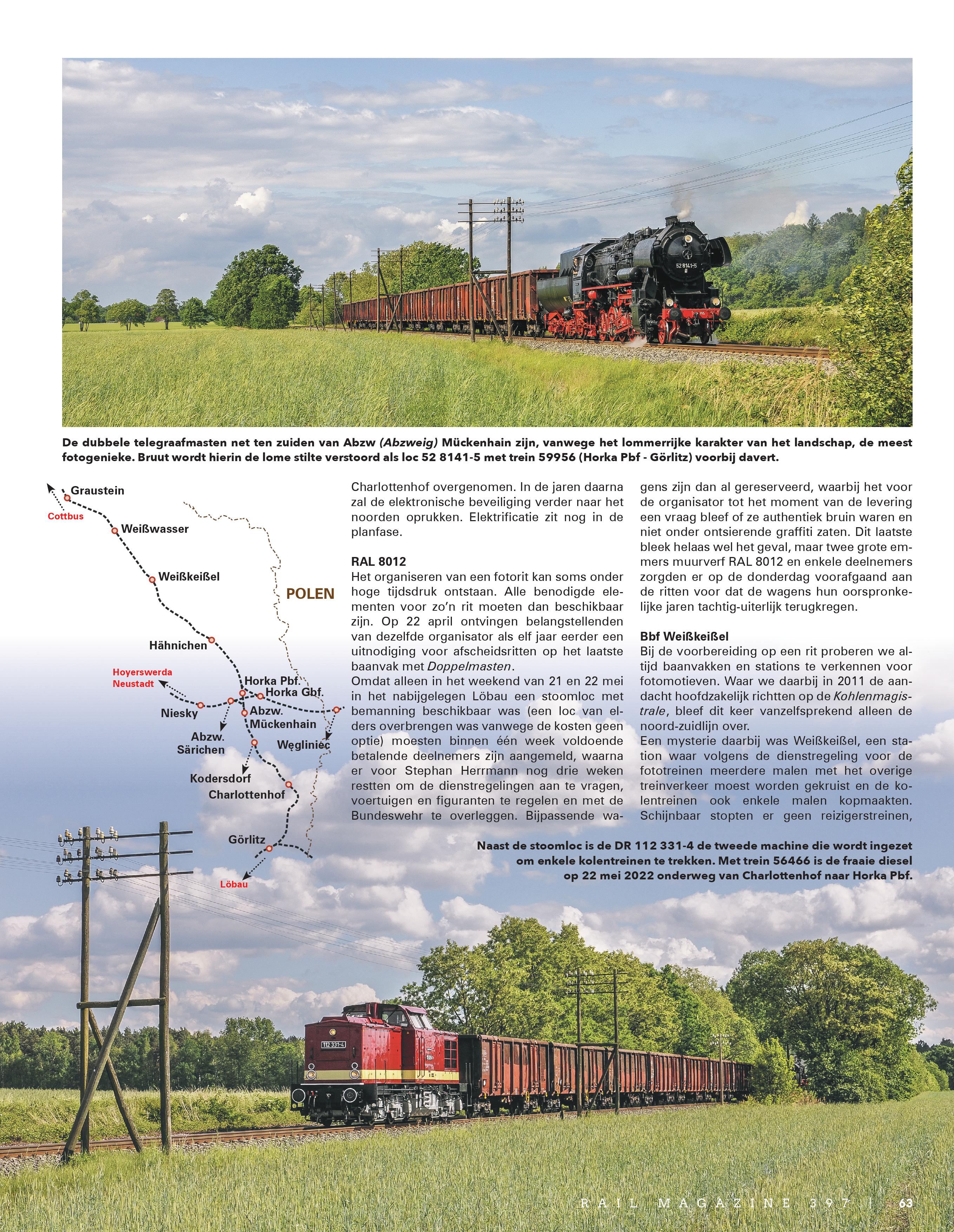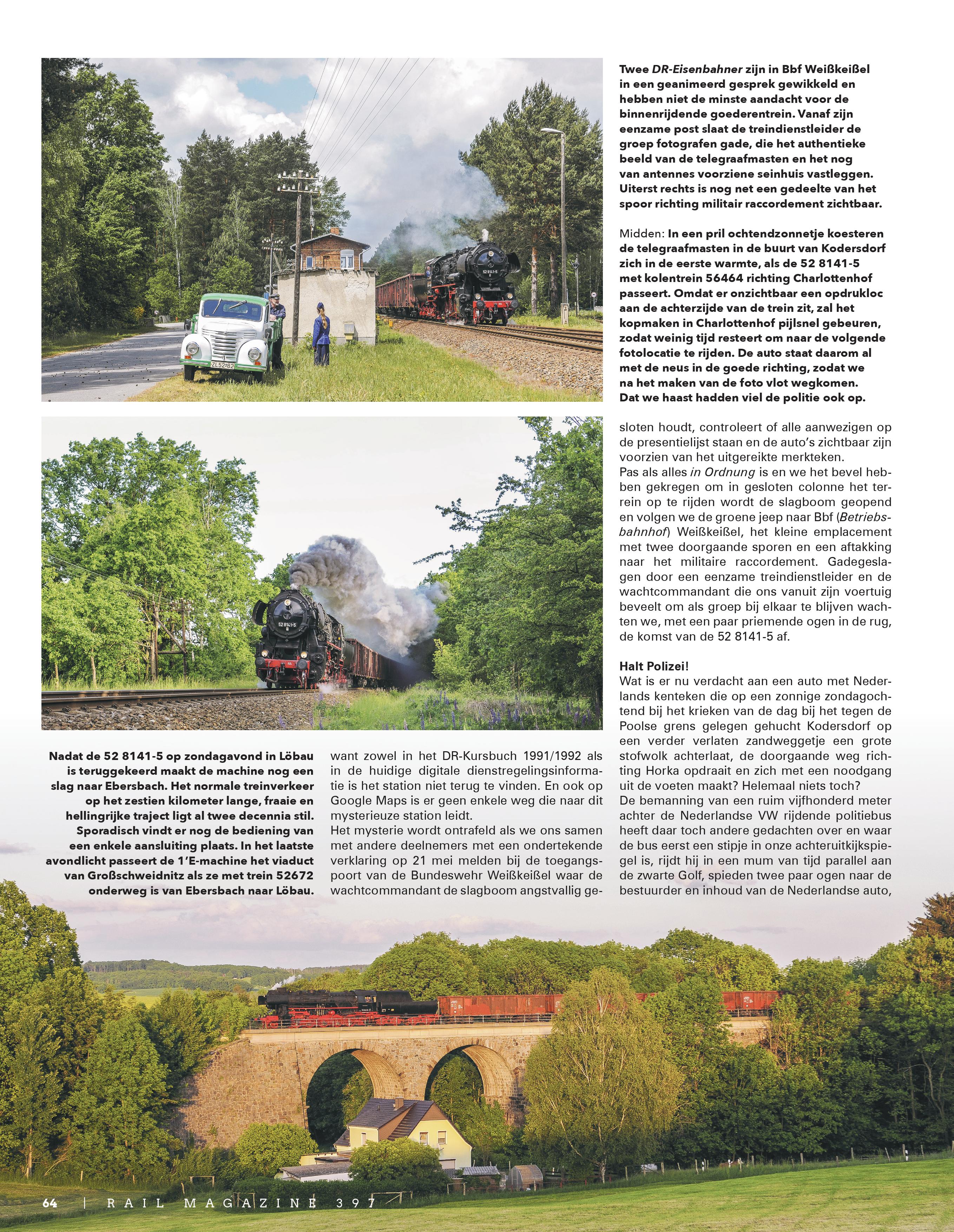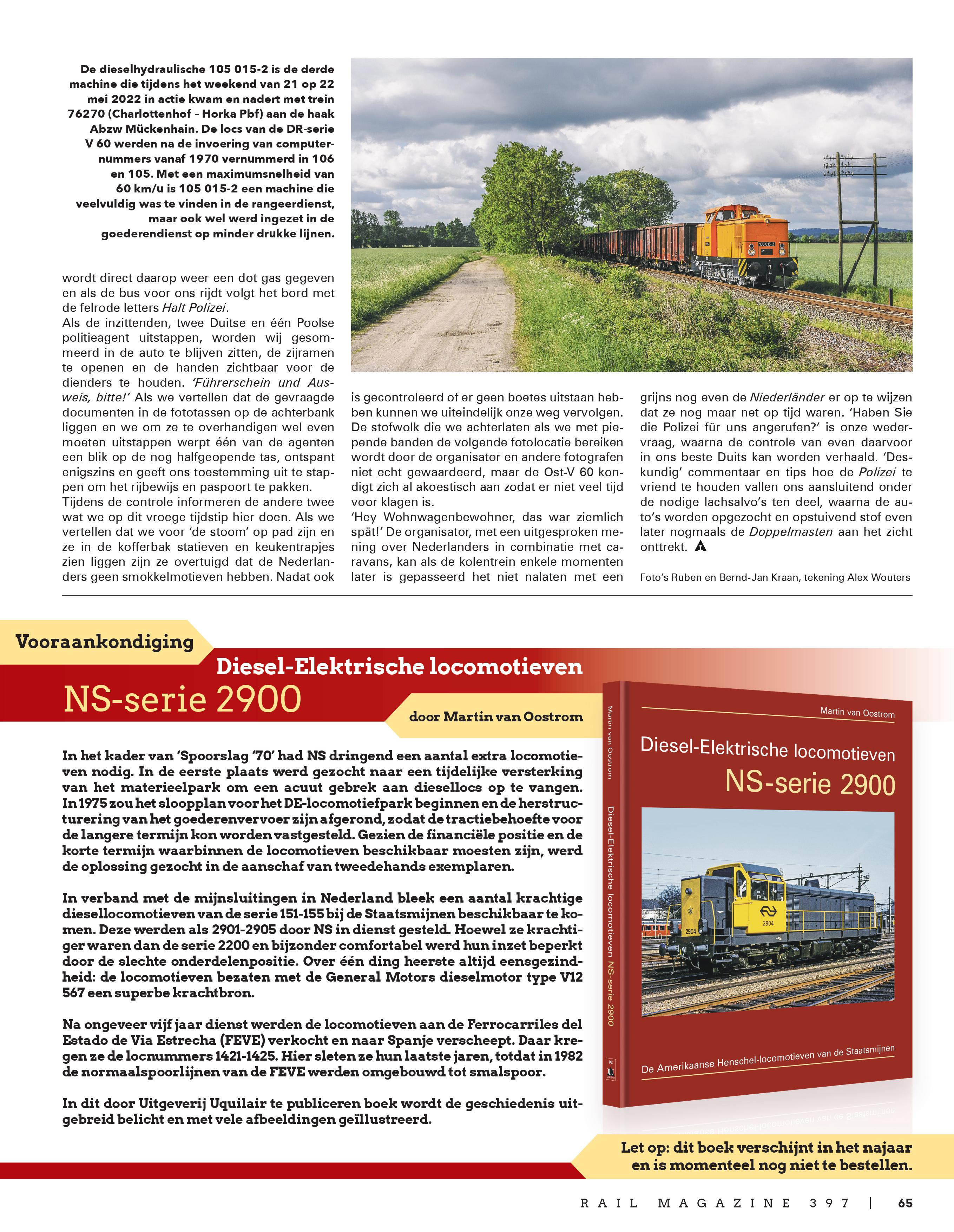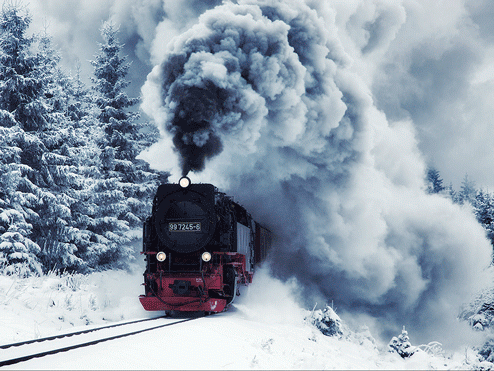Our colleagues and their hobbies
Passion for old-locs.
The first publication of an article from Rail Magazine from the end of last year, with the Lentink theme "trains and model railways", was received very positively by many readers. That is why we were once again able to get our hands on a very recent copy from last month, we did not want to withhold this edition from the interested reader.
Our colleague Ruben travels with his father on weekends through Eastern Europe to be able to capture original trains with a background that matches the age of the locomotives and the wagons coupled behind them. (if present)
The “scenery” is further completed by the transport vehicles present from that time, the people dressed in uniforms and people in their everyday clothes from that era. (see fig. page 64)
Why in former East Germany? In East Germany the last old railways in reasonable condition can still be found with the original signal boxes, stations and their wiring. The wiring is for the communication between the stations and the main exchange. Turnouts and signals are also still "converted" from signal in the old way. This used to be done manually, by the signal operator present at the station, or by the driver and his co-driver himself and then by an electric steering signal.
Our colleague and his father excel, among other things, because of the beautiful photos they shoot and the appropriate “setting” in which the locomotive and combination are captured. This requires a lot of knowledge and experience. According to them, a photo is only a correct photo if everything in the photo corresponds to the exact time setting. Therefore, no object of our time is accepted in the photo. Both only go for the ultimate photo. Apart from the years of experience of both gentlemen, Ruben's father is an official locomotive driver, who is allowed to drive both new and old locomotives. In this edition, the gentlemen once again take us on one of their last trips to the former East Germany.
Note: For the connoisseurs among us “the era IV” runs between 1968 and 1990.
Classification in West Germany (Federal Republic)
Period IVa: 1968–1980 (UIC numbering; Computer numbering on locomotives; IC with only 1st class instead of the TEE; New ocean blue/beige livery). Incidentally, not all locomotives were renumbered at the same time, for example in 1969 a few steam locomotives of the class 03 were running with their old numbers.
Period IVb: 1980–ca. 1985 (IC with 2 classes, most pre-war locomotives disappear)
Period IVc: ca. 1985–1990 (First red trainsets; arrival of the InterCityExperimental (later InterCityExpress or ICE), the last pre-war locomotives, of the class 194 (German crocodile), disappear)
Classification in East Germany (GDR)
Period IVa: 1970–1980 (UIC numbering, computer numbering on locomotives; new livery for locomotives in red and orange)
Period IVb: 1980–1990 (New color scheme for carriages)
More and more goods are transported by rail. Locomotives are becoming more powerful and numbering of locomotives and wagons is standardized across Europe, thanks to UIC numbering.
NS trains are all painted in the new colors of the Dutch Railways for the first time: yellow and blue.
Once again, the photos in this issue, and the text, were made by our colleague Ruben Kraan and his father Bernd-Jan Kraan.
On behalf of both gentlemen, we wish everyone a lot of reading pleasure.
